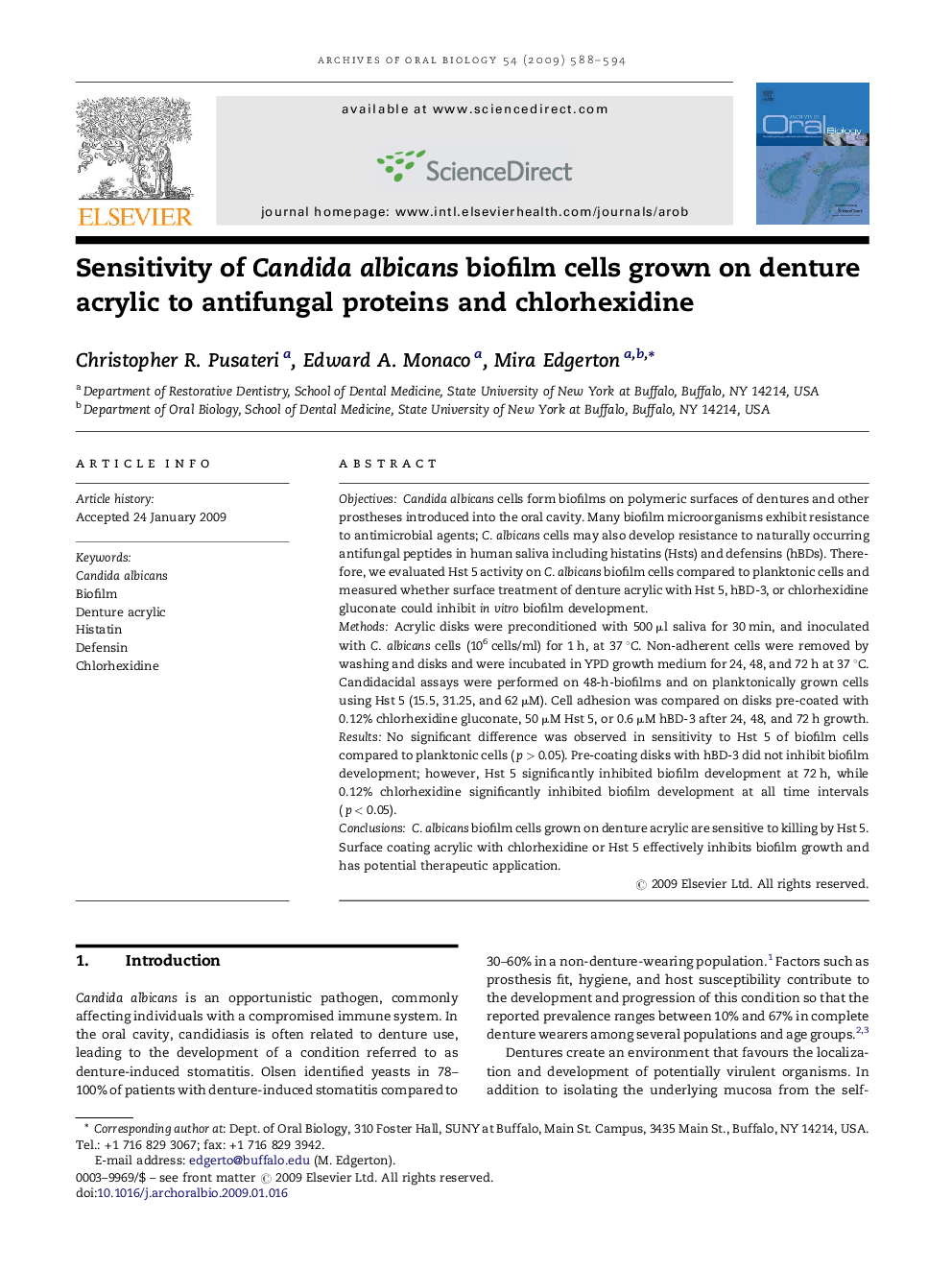| Article ID | Journal | Published Year | Pages | File Type |
|---|---|---|---|---|
| 3121278 | Archives of Oral Biology | 2009 | 7 Pages |
ObjectivesCandida albicans cells form biofilms on polymeric surfaces of dentures and other prostheses introduced into the oral cavity. Many biofilm microorganisms exhibit resistance to antimicrobial agents; C. albicans cells may also develop resistance to naturally occurring antifungal peptides in human saliva including histatins (Hsts) and defensins (hBDs). Therefore, we evaluated Hst 5 activity on C. albicans biofilm cells compared to planktonic cells and measured whether surface treatment of denture acrylic with Hst 5, hBD-3, or chlorhexidine gluconate could inhibit in vitro biofilm development.MethodsAcrylic disks were preconditioned with 500 μl saliva for 30 min, and inoculated with C. albicans cells (106 cells/ml) for 1 h, at 37 °C. Non-adherent cells were removed by washing and disks and were incubated in YPD growth medium for 24, 48, and 72 h at 37 °C. Candidacidal assays were performed on 48-h-biofilms and on planktonically grown cells using Hst 5 (15.5, 31.25, and 62 μM). Cell adhesion was compared on disks pre-coated with 0.12% chlorhexidine gluconate, 50 μM Hst 5, or 0.6 μM hBD-3 after 24, 48, and 72 h growth.ResultsNo significant difference was observed in sensitivity to Hst 5 of biofilm cells compared to planktonic cells (p > 0.05). Pre-coating disks with hBD-3 did not inhibit biofilm development; however, Hst 5 significantly inhibited biofilm development at 72 h, while 0.12% chlorhexidine significantly inhibited biofilm development at all time intervals (p < 0.05).ConclusionsC. albicans biofilm cells grown on denture acrylic are sensitive to killing by Hst 5. Surface coating acrylic with chlorhexidine or Hst 5 effectively inhibits biofilm growth and has potential therapeutic application.
